






Five years ago, When the World Handicap System™ was launched, one of the primary objectives, was to make it as easy as possible for every player, regardless of skill level, to establish and maintain a Handicap Index®.
Once upon a time it was ten rounds that were necessary to obtain and maintain a Handicap Index®. Fewer scores are now required (54 holes) to establish an initial Handicap Index. The maximum Handicap Index was increased to 54.0 and
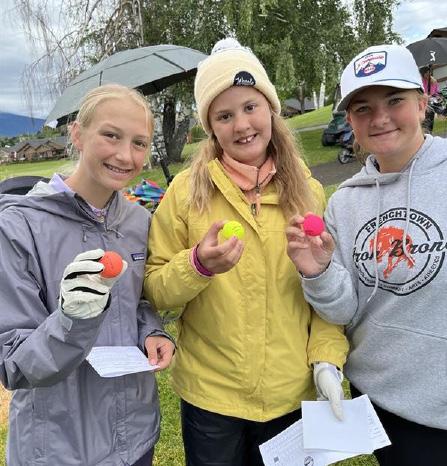
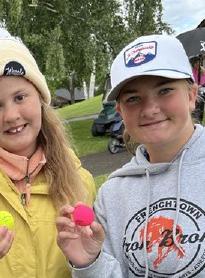
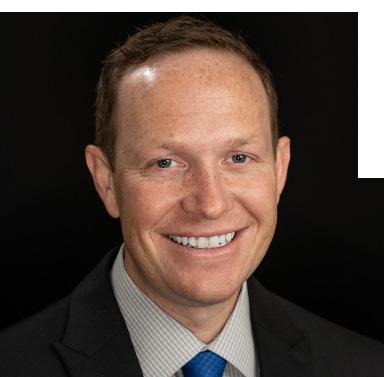
daily updates provided responsiveness for players starting out.
A Handicap Index is the gold standard in golf. It promotes fair play among golfers of various skill levels. One of my favorite defining characteristics of golf is that you can compete with someone of a different ability level equitably. I’ve tried doing that in tennis, on a track or in a pool – it’s just not something that’s easy to set up, while golf has dialed it in!
Having a handicap index tracks your performance (remember it’s a measure of your potential, not your average), it’s a portable number that can be used on any course with a Course Rating™ and Slope Rating®, and its calculation is the same for millions of golfers around the world, so you truly are able to be part of one golfing community that may speak many different languages, but uses one code for scoring.
One real world application that I’ve noticed more and more in my travels is that many courses are providing guidance as to what tees you should play based on your handicap. This helpful tool takes the guesswork out of purely gauging the overall yardage to determine which set of tees
BOARD OF DIRECTORS - OFFICERS
PRESIDENT................................................... Peter Benson
VICE PRESIDENT.................................. Ron Ramsbacher
TREASURER....................................................... Bill Dunn
PAST PRESIDENT............................................. Carla Berg
WOMEN’S CHAIR........................................ Mary Bryson
BOARD OF DIRECTORS
Brett Bennyhoff, Peter Benson, Carla Berg, Mary Bryson, Bill Dunn, Cheri Ellis, Lisa Forsberg, Marcia Hafner, Ron Ramsbacher, Karen Rice, Joe Rossman, Rod Stirling
MSGA STAFF
Executive Director......................................... Nick Dietzen
Tournament Director...................................... Tim Bakker
Membership Operations Director............... Emily Hulsey
Member Services Coordinator......................... Ian Hulsey
Communications & Tournament Manager.... Katie Fagg
Communcations Coordinator.......................... Ty Sparing
Partnerships & Business Development.......... Jess Miller
Jess Miller.................................. 1 (800) 628-3752, ext. 5
406GOLF STAFF
Editor in Chief............................................... Nick Dietzen
Consulting Editor........................................ David Bataller
Senior Writer..................................................... Ty Sparing
Graphic Designer............................................... Katie Fagg

Montana State Golf Association P.O. Box 4306 Helena, MT 59604
1 (800) 628-3752
www.msgagolf.org
makes the best sense for you and your friends on a buddy trip to a new course. Factors like elevation, temperature, the challenge of the terrain etc. provide both the nuances that make golf unique, challenging and always different are also not known when you roll up to a course for the first time.
For the first time in weeks, there is a glimpse in the Treasure State of spring. Perhaps the snow melt will continue, and grass will remind you that golf is just around the corner. We know that we’re preaching to the choir when it comes to the benefits of membership and importance of having a handicap index.
My goal for us all this year is to bring more friends to the game and encourage one another to sign up for a membership. Lean into the benefits beyond a handicap
index the MSGA provides and keep track of the rounds played, your golf journey and set up a friendly game with a longtime or new friend and revel in the enjoyment that is so unique about the game –we can all enjoy it together, regardless of age or ability.
This month, be sure to check in at your local club or contact us if you think your membership might be expiring. Better yet, have a friend sign up too. Active score posting season is a month away –we’re ready. Are you?



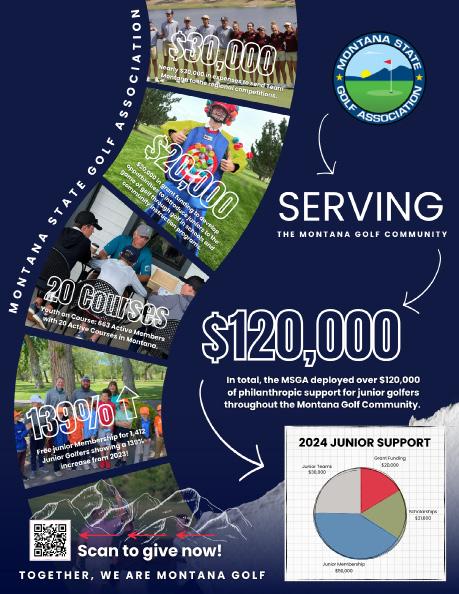

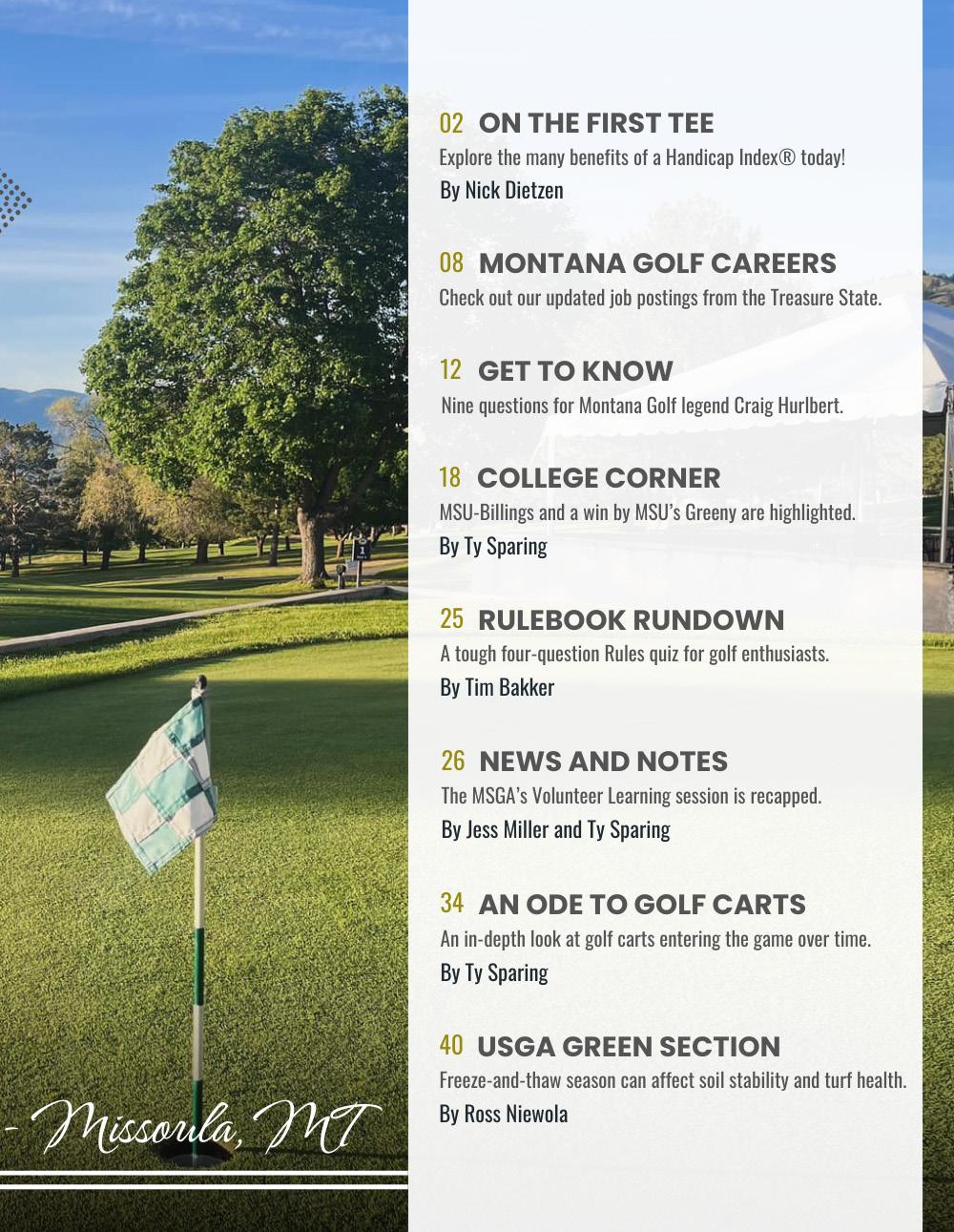


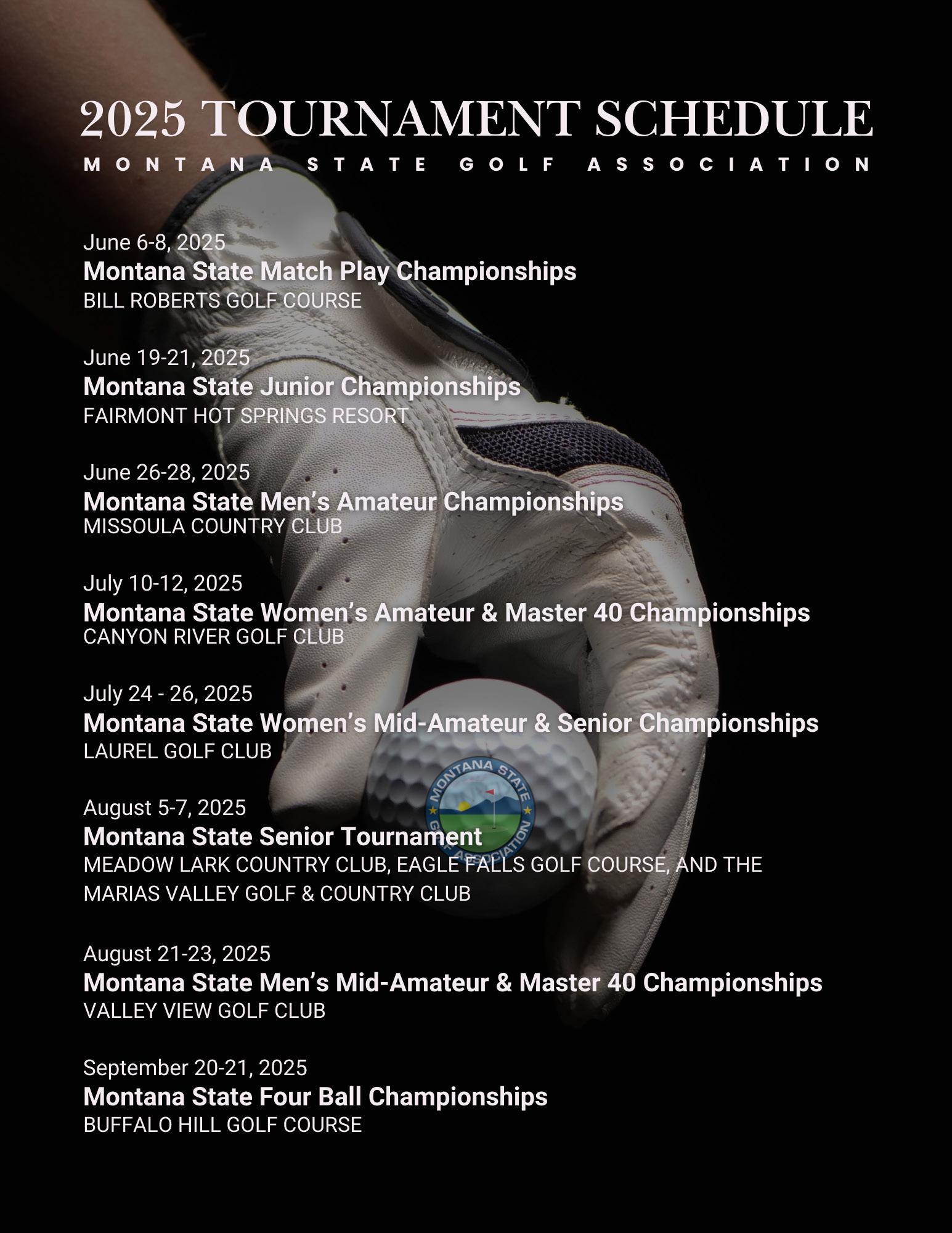
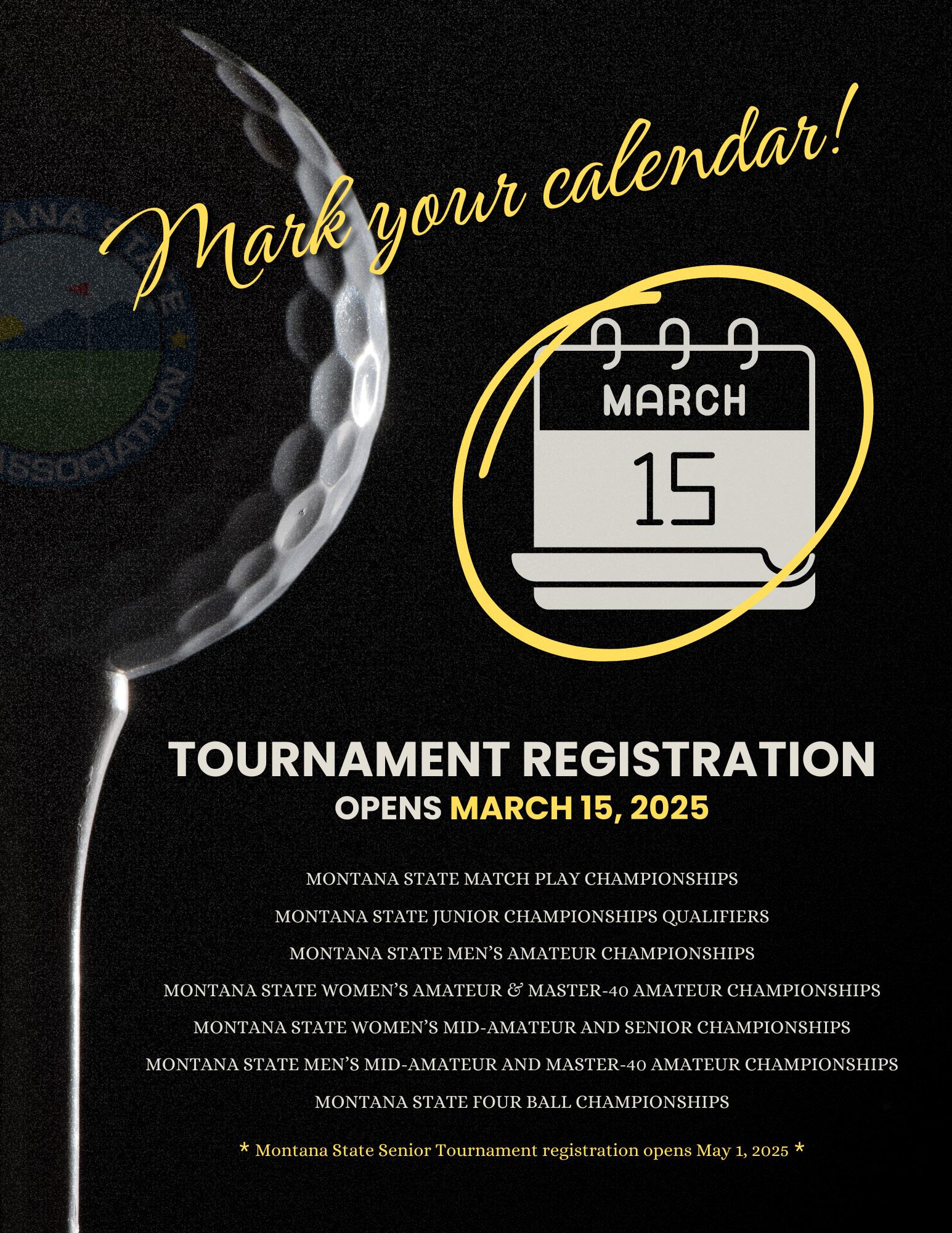

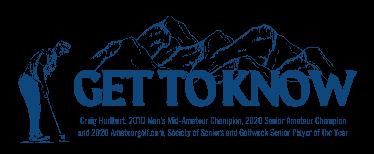
1. Who introduced you to golf?
My grandfather (Bapa)! I spent my summers from about nine years old to 14 years old on our family farm, which is 20 miles south of Flaxville, Montana. We would play multiple times each week at the Big Muddy Golf Club (sand greens) in Outlook, MT. Bapa LOVED to golf, and his love and passion rubbed off on me. I don’t think he ever broke 90. But it didn’t matter. Some of my most fond memories were playing with him.
2. Who influenced you most in your golf life?
My mom and dad have been a constant source of support and love. No matter what was happening with my golf life, if I was winning or losing. It’s a good lesson for parents, be supportive and loving. You don’t need to have any knowledge of the sport, but the love and support can make all the difference.
3. What is the best part of your game?
I would say my grit. I am very strong mentally and will grind until it’s over. I do a good job of letting my frustration out and getting back to the task at hand. I am a top-notch ball striker, and if I putt well, I’m going to shoot a good score.
4. What is your favorite course in Montana and why?
Big Muddy Golf Club in Outlook, but it is no longer there. So, I would say Yellowstone Country Club in Billings. I grew up playing there, and every single time I’m on the property, it puts me in a good place mentally. So many great memories as a youngster there.
5. What is a dream course you'd like to play once?
I have played Augusta National, Cypress Point, Pine Valley and I’m a member at Merion. So, the big 4 or 5 have been checked off. I have played a lot of golf in Scotland but have not played The Old Course. I think that needs to happen soon! Tara Iti in New Zealand is also on my list!
6. What is your dream celebrity foursome (living or dead)? Why would you choose them?
I would love to play with Jesus, Bobby Jones (Prime), Jack Nicklaus (Prime), and Tiger Woods (Prime). I think we will know who the real GOAT is when that round is over.
7. What’s your most memorable moment on a golf course?
So many!! A good Montana memory was the year I won the MT Mid Am at Laurel CC. I was preparing to tee off on the final day in the final group, and I looked over at someone in a cart, and it was my High School basketball coach, Bill Ryan. Laurel was his home course. We won the 1980 State Championship in hoops beating CMR by 20 points, and I was the starting point guard.
Coach Ryan had played a huge role in my development into a man and was a mountain of a figure in my life. I hadn’t seen him in probably 20 years. So didn’t get a chance to say hello before we teed off.
Over the course of that round, I saw him following us, always a good distance away.
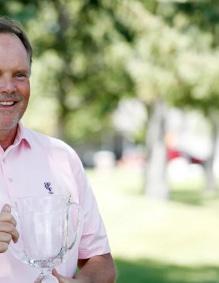
But on 18, I hit my drive right down the middle, I had a four-shot lead, and unless something crazy happened, I was going to win. He drove over to me, just as I was walking off the tee, and put his foot up on the dash of the cart and pulled his pant leg up. He had on his red socks. These were the same red socks he wore EVERY game of the 1980 basketball season, and this was 2010. Those socks were his good luck socks. He said to me as he pulled up his pant leg, ‘Craig, so proud of you, I had to dig these socks out of the back of my drawer, but I JUST KNEW they had one more win in there for us!! And then he drove away.
I was walking down the fairway with tears coming down my cheeks…then I said to myself…pull yourself together, you have some golf left. So, I won because of coach Ryan’s lucky red socks!

8. If you could change one thing about the game of golf what would it be?
This is targeted to tournament golf. 3:45 minute max time play for a threesome, 4 hours for a foursome. For each 5 minutes that goes beyond 3:45, or 4:00, it is a 5 shot penalty for each party in the group. There is no good reason to take more than 3:45 minutes to play 18 holes in a threesome.
9. What advice would you give to beginner golfers?
To remember that golf is fun. Have fun

throughout the process. No matter your level of play. No matter what has been going on in my life, good or bad, GOLF has always been there for me. It has been my constant best friend. I can never, ever repay golf for what it has meant to me.
Bonus: Lay up or go for it?
Playing for fun, ALWAYS GO FOR IT. If playing for something competitive, assess the situation, and play to your strengths! You must know the situation!


BY TY SPARING
MSGA COMMUNICATIONS COORDINATOR
Montana native Craig Hurlbert recently competed at the prestigious Jones Cup Senior Invitational at the Sea Island Golf Club in St. Simons, Georgia. Held February 25-27, the 54-hole event is invitation only and brings out some of the top senior players in the country.
Hurlbert, who hails from Billings, was the Montana State Mid-Amateur Champion in 2010 and the Senior Amateur Champion in 2020. Along with his Montana credentials he’s also achieved honors on the big stages, having reached a #3 WAGR ranking amongst global players aged 55 and up, along with garnering the 2020 Amateurgolf.com, Society of Seniors, and Golfweek Senior Player of the Year Awards.
No stranger to high levels of competition, Hurlbert had to deal with a field of 84 elite senior golfers. He probably didn’t want to start the first hole of round one with a bogey, but he responded quickly with two straight birdies and stayed consistent the rest of the way to finish the round at even par. The following two rounds were similar at 71 and 72, with Hurlbert notching nine birdies overall on his way to a final score of +3 (213). At the end Hurlbert sat in a tie for 14th place, another great finish for one of Montana’s best golfers.
Congratulations to Craig!
Oh and by the way, check out the current “Get to Know” in this issue, as Craig himself was kind enough to answer a few of our questions.
For full results of the Jones Cup Senior Invitational, CLICK HERE.

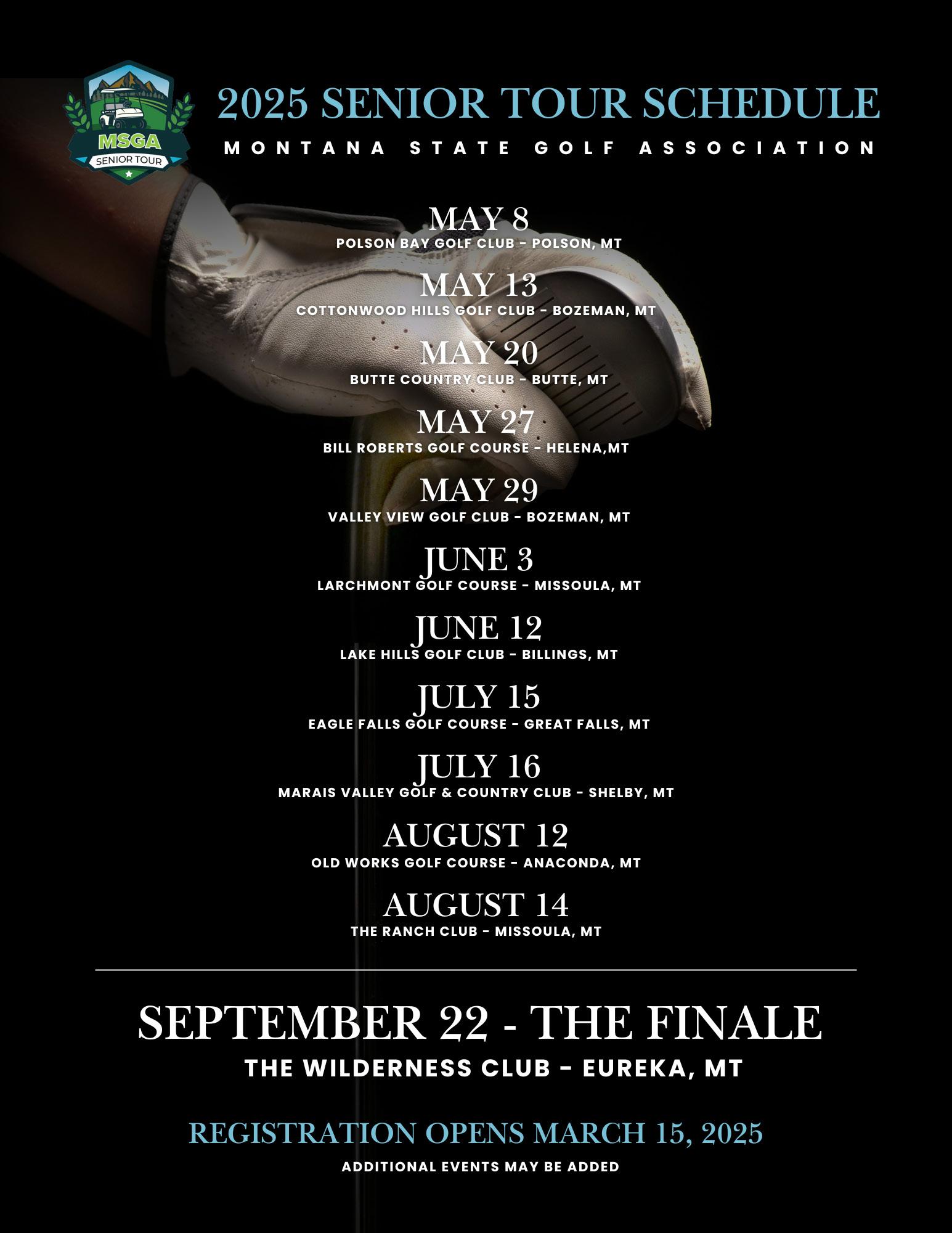


BY TY SPARING
MSGA COMMUNICATIONS COORDINATOR
The women’s golf team for the MSU-Billings Yellowjackets began their spring portion of the season at the Battle at Hilton Head. Held February 17-18, MSU-B competed against thirteen other high-level teams at the Palmetto Dunes Golf Club in Hilton Head, South Carolina.
After a record setting fall season, the Yellowjackets shook off the frost, flew across the country and played against a field that featured four teams ranked in the top 35 in the nation. As a team MSU-B finished in 13th place with a three-round score of 995.
As she has done all season, Orraya Tipasathien led the way for MSU-B with a 36th place finish with a total score of +25 (241). After a record breaking fall season in which she won five tournaments in a row, Tipasathien will no doubt be a player to watch as the season rolls on.
Following Tipasathien was Gia Vargas in a tie for 43rd place at +28 (244) and Ella Tannenberger who tied for 56th place at +38 (254).
Wingate’s Amely Bochaton, the number one ranked golf on the DII level, won the individual event at +5 (221). Wingate meanwhile is
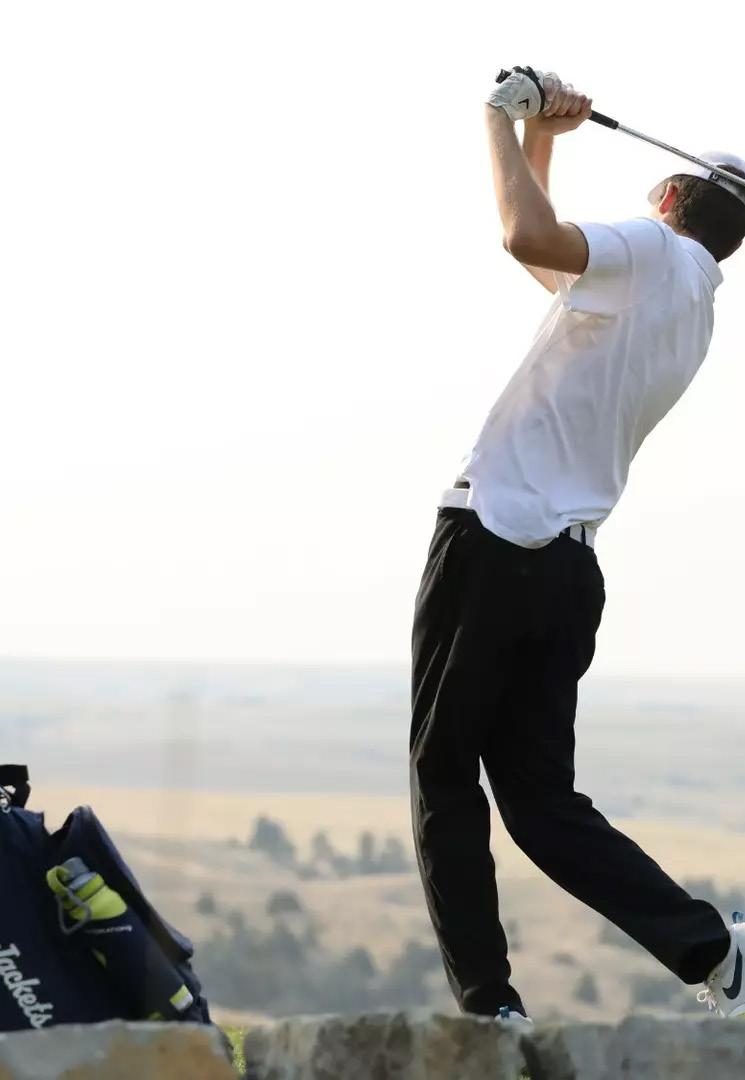
the second ranked team in the nation and they won by sixteen strokes at +42 (906).
Next up for the MSU-Billing women’s team is the SW Minnesota State Spring Invitational, held March 10-11 at the Wigwam Resort Red Course in Litchfield, Arizona.
For full results of the Battle at Hilton Head, CLICK HERE.



MSU-Billings Men’s Golf at Spring Bulldog Clash
The MSU-B men’s golf team recently got their spring portion of the season underway at the Spring Bulldog Clash. Held February 2425, eighteen other competitive teams joined the Yellowjackets at the Caledonia Golf & Fish Club in Pawleys Island, South Carolina. Six out of those teams came into the event ranked in the top fifty nationally, the highest being ninth ranked Columbus State.
As a team the Yellowjackets finished the three rounds in 17th place at +59 (899). They were led by 6’7” freshman Ryan Badger who ended up in 60th place at +7 (217). Following Badger was Kaopun Akmaneenin in 76th place at +14 (224) and Hayato Ito who finished in 93rd with a final score of +20 (230).
For full results of the Spring Bulldog Clash, CLICK HERE.
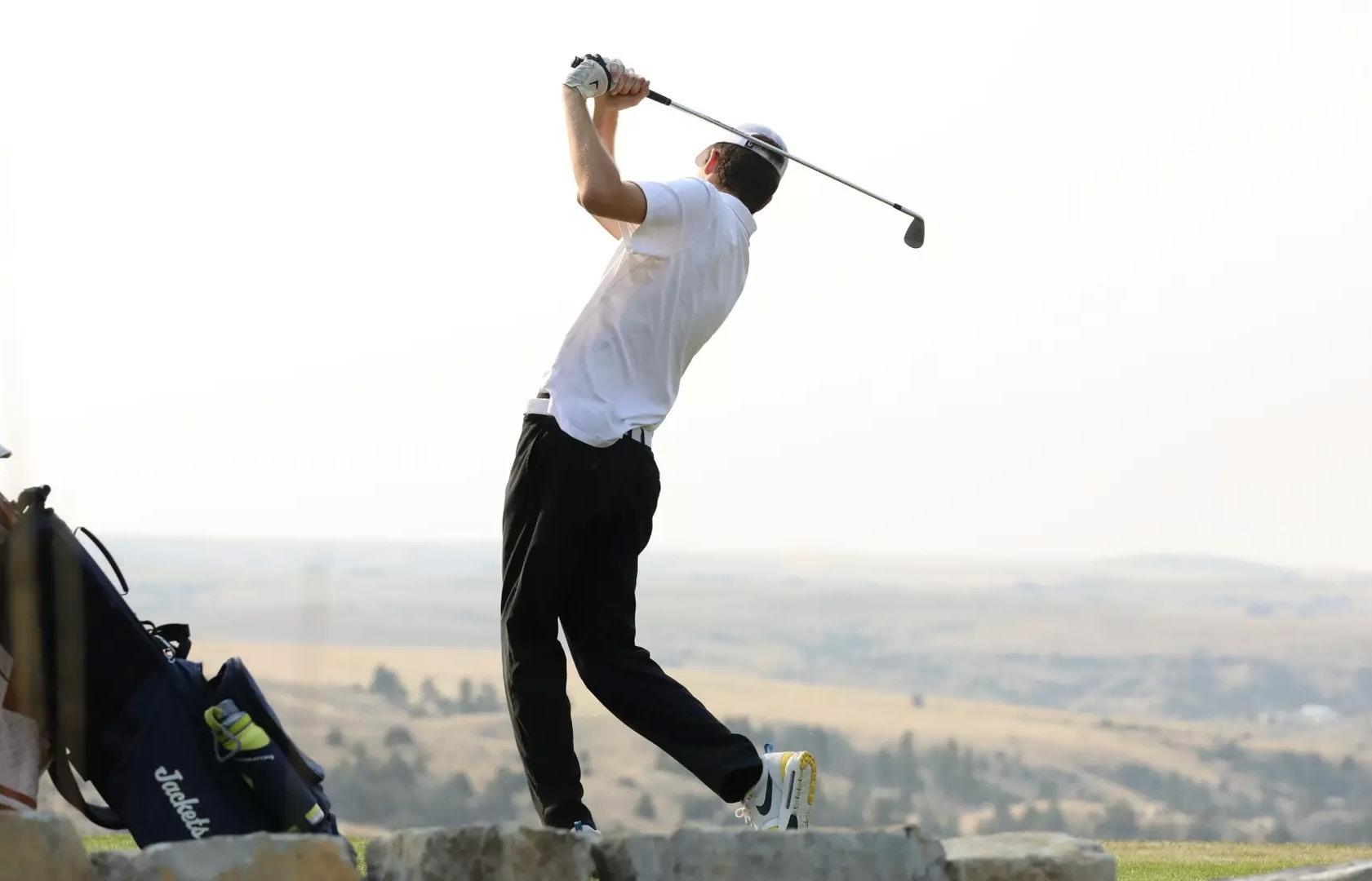
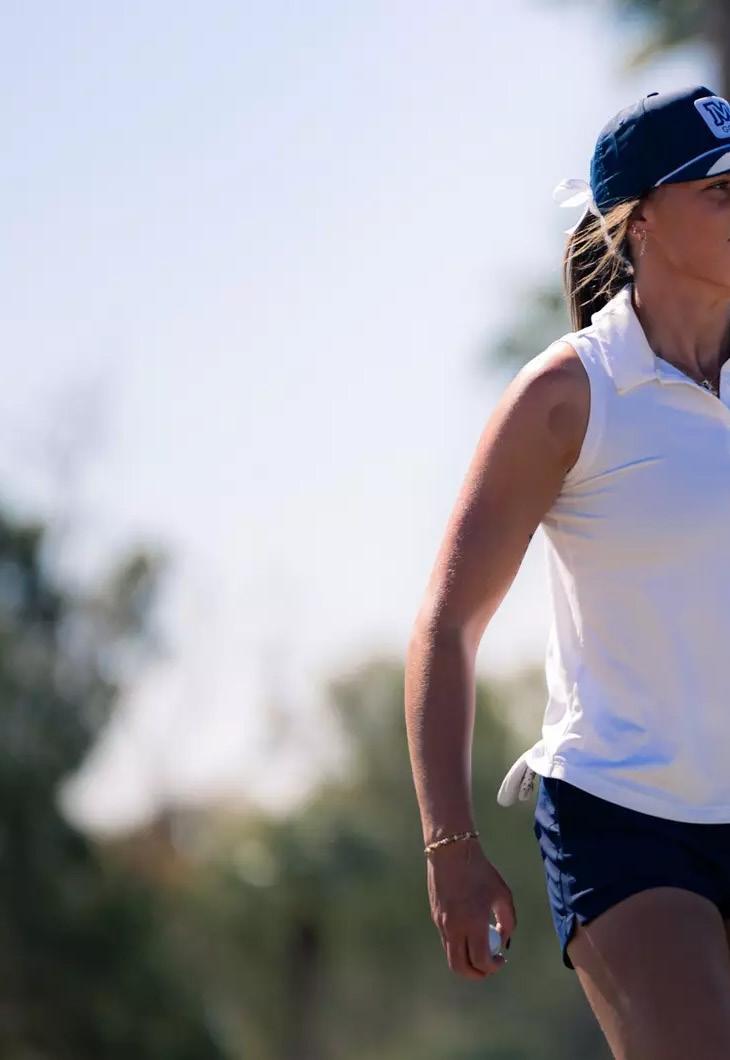
BY TY SPARING MSGA COMMUNICATIONS COORDINATOR
Montana State University’s star golfer Lauren Greeny showed once again why she might be the best female golfer in the Big Sky Conference after a thrilling three-hole playoff victory at the GCU Invitational. With a final round score of -6 (66) she tied her own program record on the way to her second individual title of the season.
Held February 25-26, the Bobcats faced twelve other teams at the Grand Canyon Golf Course in Phoenix, Arizona. As a team, the Bobcats played well, picking up where they left off this fall with a third-place finish after shooting a cumulative +13 (877) over course of the event. It was capped off with Greeny’s stellar third round performance.

The two-time reigning Montana State Women’s Amateur Champion didn’t appear destined for victory after a first round of +2 (74) put her out of the top twenty overall, but as we’ve seen over the years, Greeny is the type of competitor that refuses to give up. The second round saw improvement, as she notched a -2 (70) which put her within reaching distance to the top of the leaderboard, but knew a huge performance was needed in round three if she wanted to snag that number one spot.
Coming into the third round four shots back of the leader, Greeny started off with her only bogey of the day but managed seven birdies the rest of the way – five of which came in the last seven holes of play. When all was said and done, she found herself in a tie with Grand Canyon University’s Calynne Rosholt, and after a dramatic three-hole playoff in which she secured two birdies and a bogey on the final hole, Greeny held up the title trophy for the second time this season.
The third round was a showcase of Greeny’s
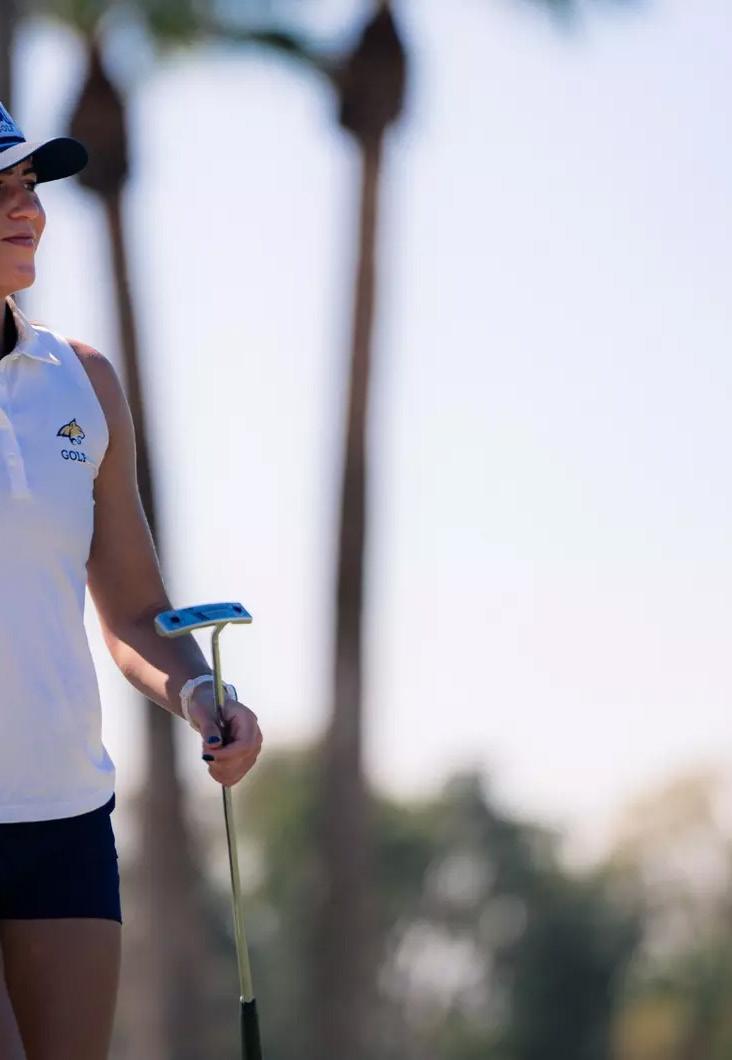
resolve, as she said afterwards, “I mean I wrote on my arm today ‘confident, assertive, relaxed,’ and I definitely played with that on my mind today. My approach shots and course management were top tier. And my putting was really really good today.”
Along with Greeny’s fantastic outing, graduate transfer Becca Tschetter had a top ten performance herself, ending up in a tie for eighth place at +1 (217). Two-time Montana State Match-Play Champion, Scarlet Weidig, also joined the top third of the field, having finished in a tie for 28th place at +8 (224).
Congratulations to Lauren on another exciting victory!
We’ll look forward to what the Bobcats have in store next week at the SUU Pizza Hut Lady Thunderbird in St. George, Utah.
For full results of the GCU Invitational, CLICK HERE.
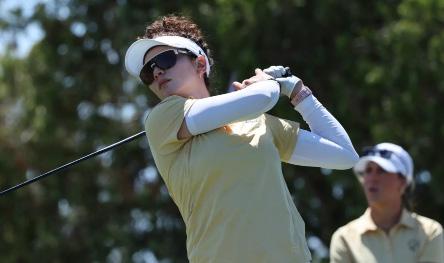


T H E K E E P
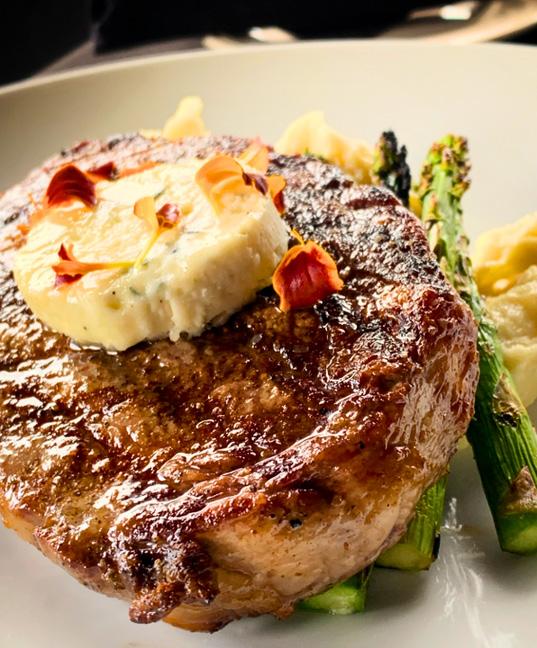



# 4 0 6 F O O D I E S
We’ve seemed to make it out of the sub-zero temperatures in the state of Montana, which of course means that golf season is near And while the courses themselves remain off limits for the time being, in many cases a delicious restaurant is located on site and still open for business
One such place is The Keep at the Highlands Golf Club in Missoula Attached to a fun nine-hole golf course with great views, The Keep is a fine dining experience that gets exceptional reviews from everyone on the MSGA staff that has eaten there, and pretty much everybody else in Missoula. Once the golf season rolls around, a quick nine followed by dinner at The Keep sounds like the perfect combination for a nice evening.
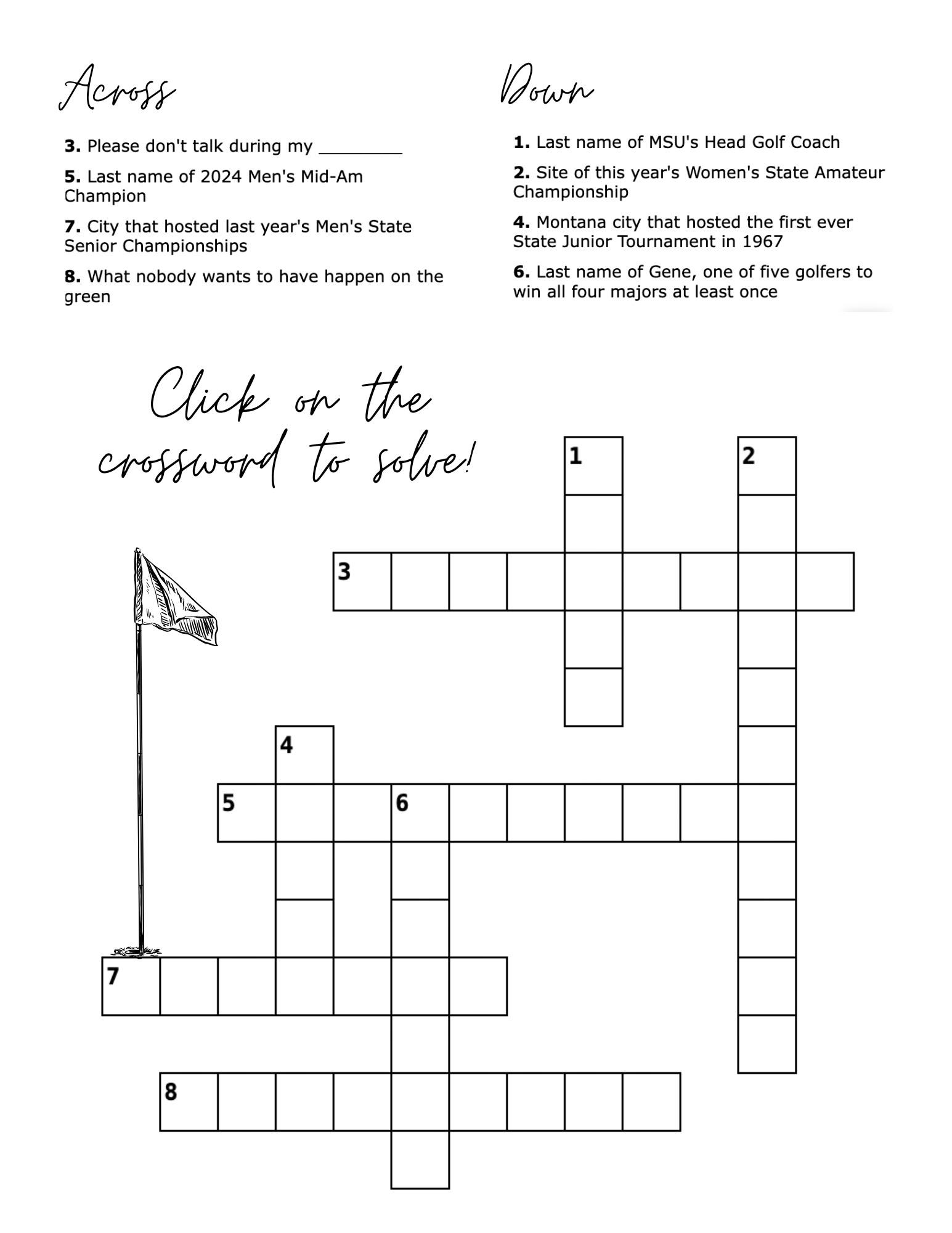
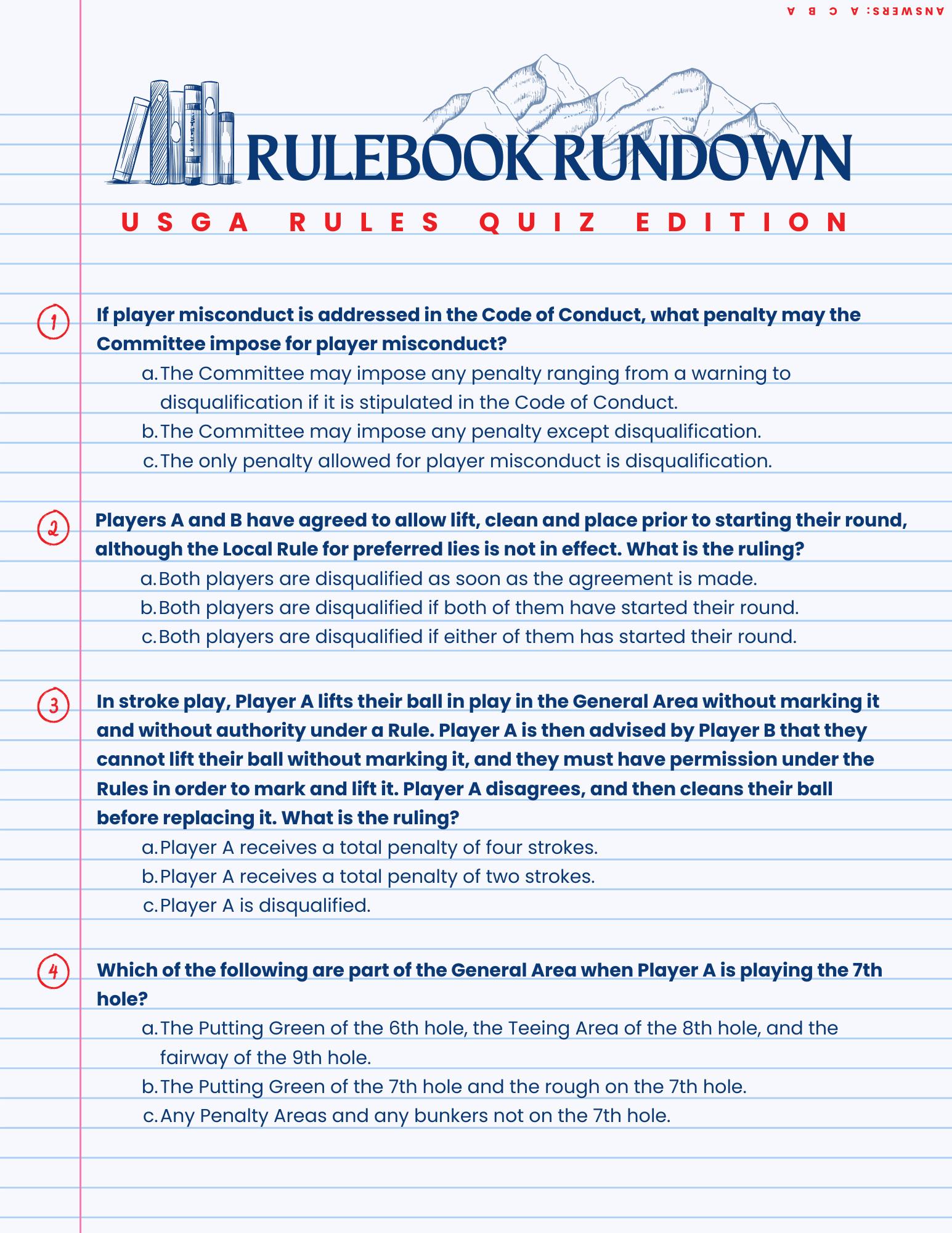
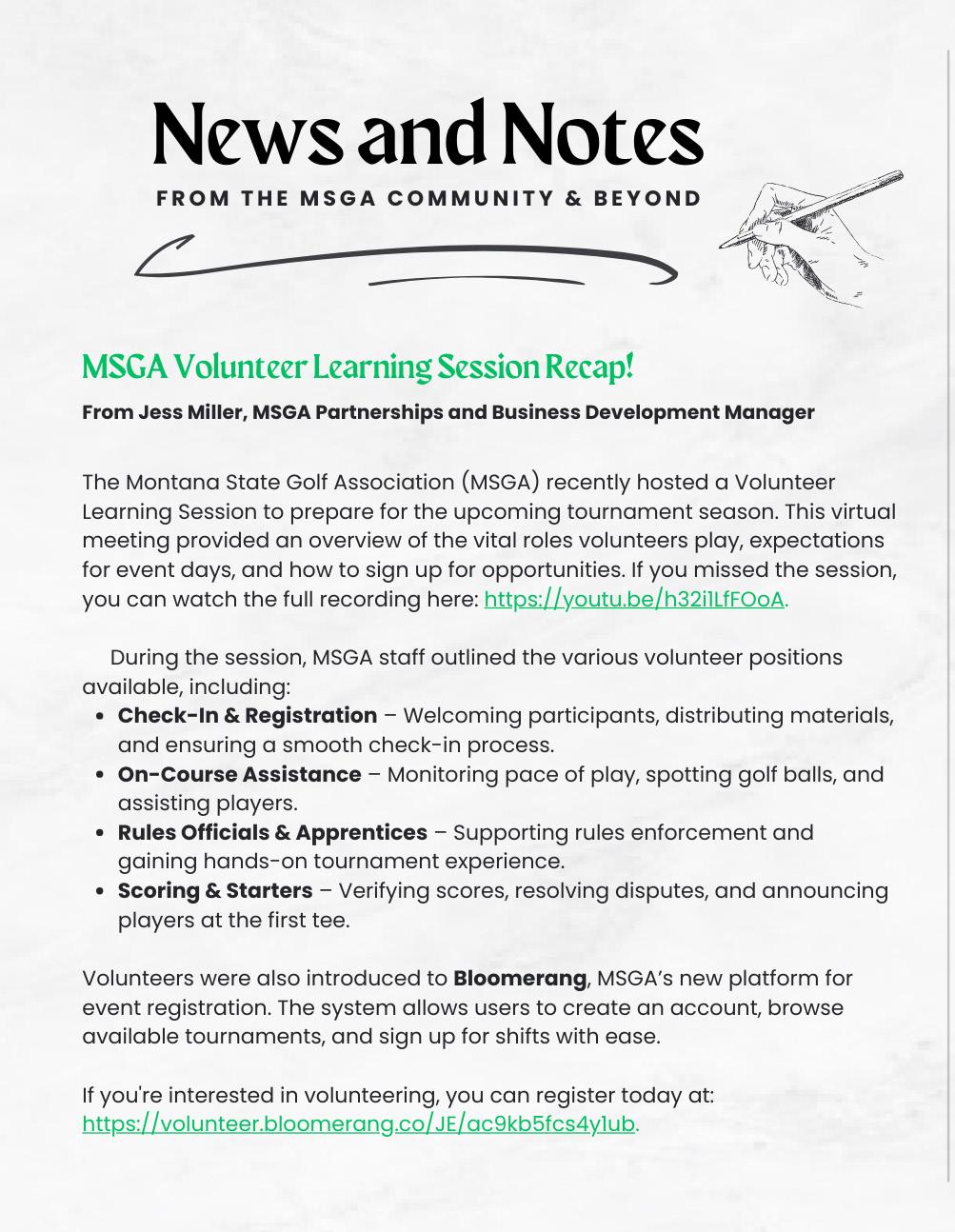

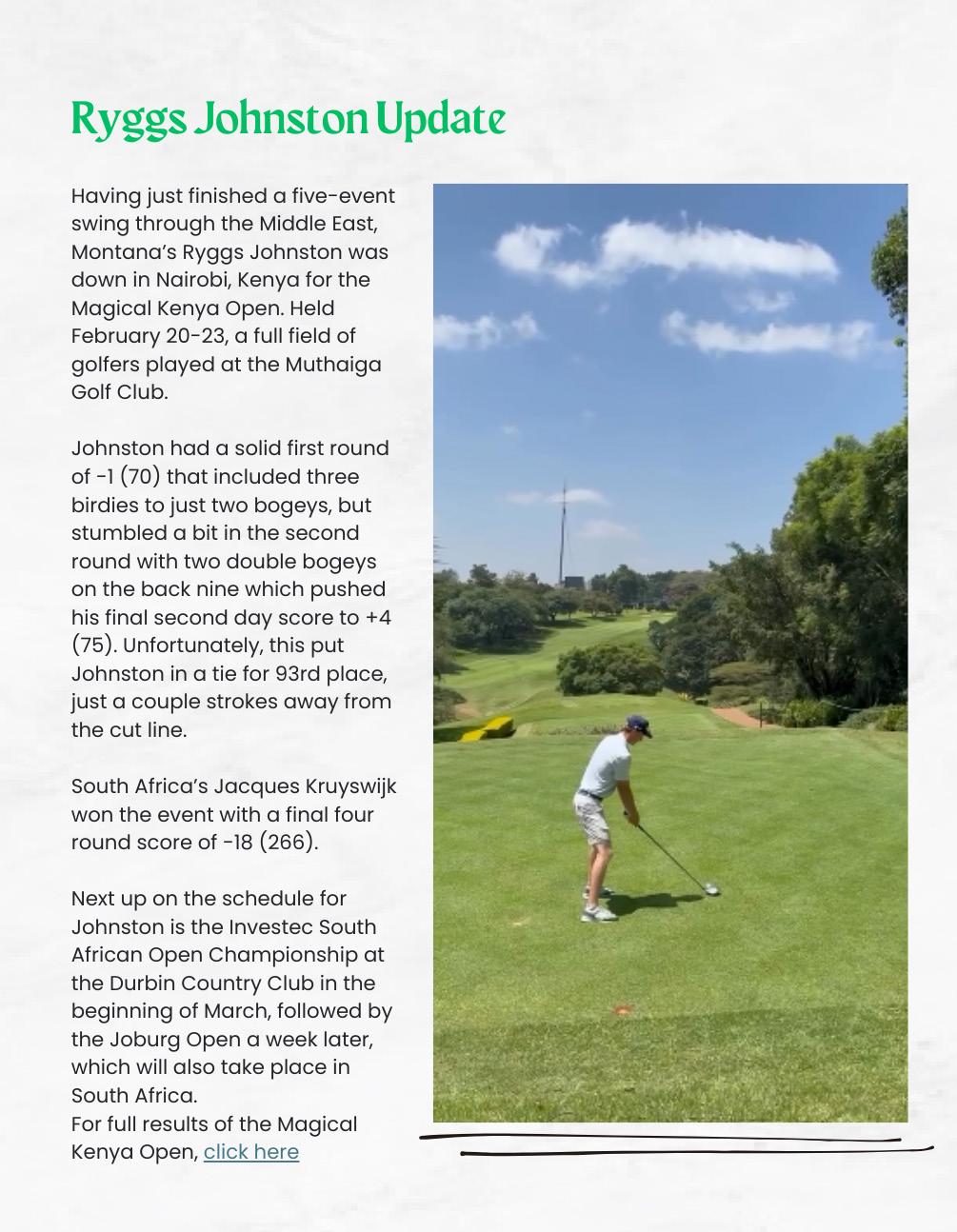


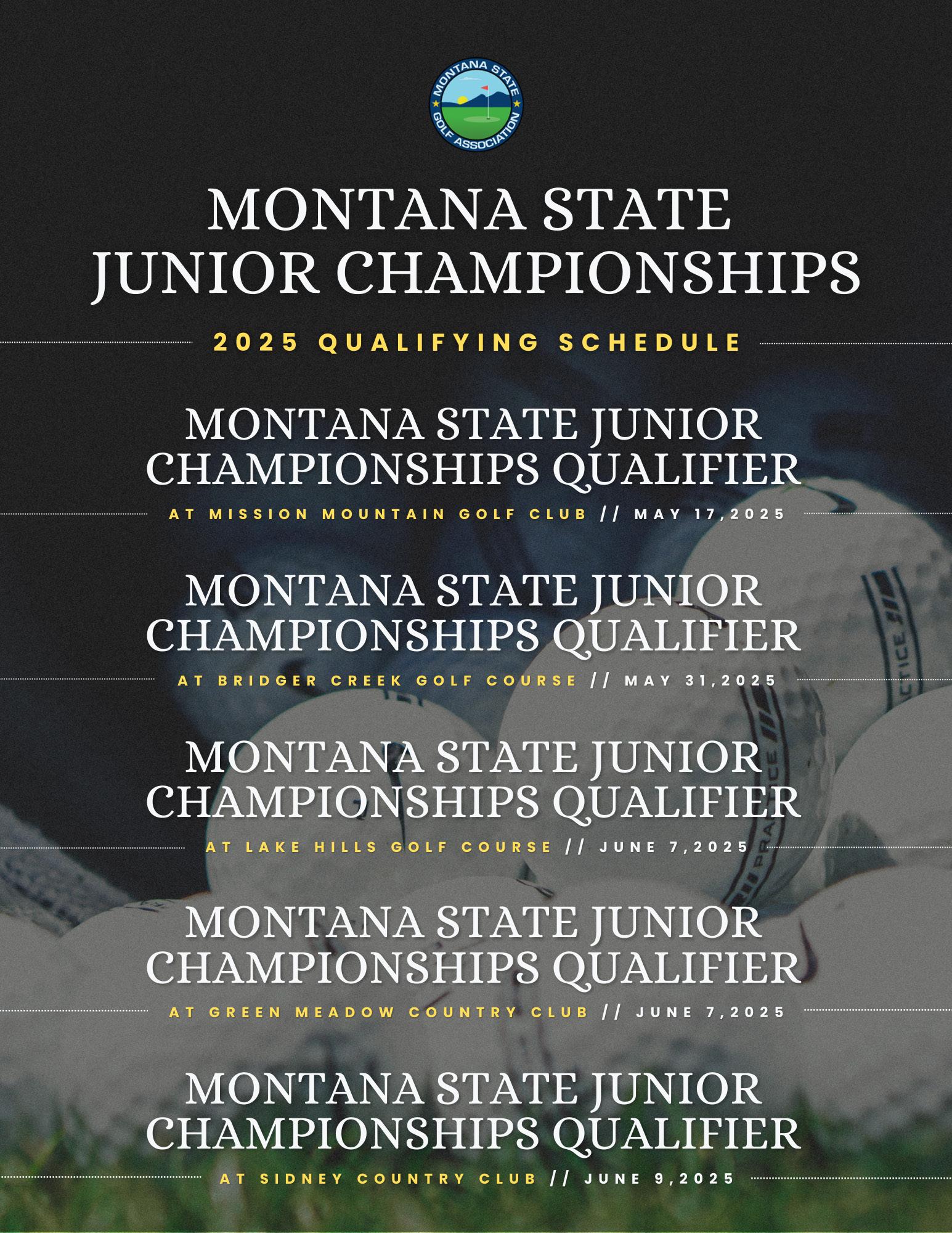
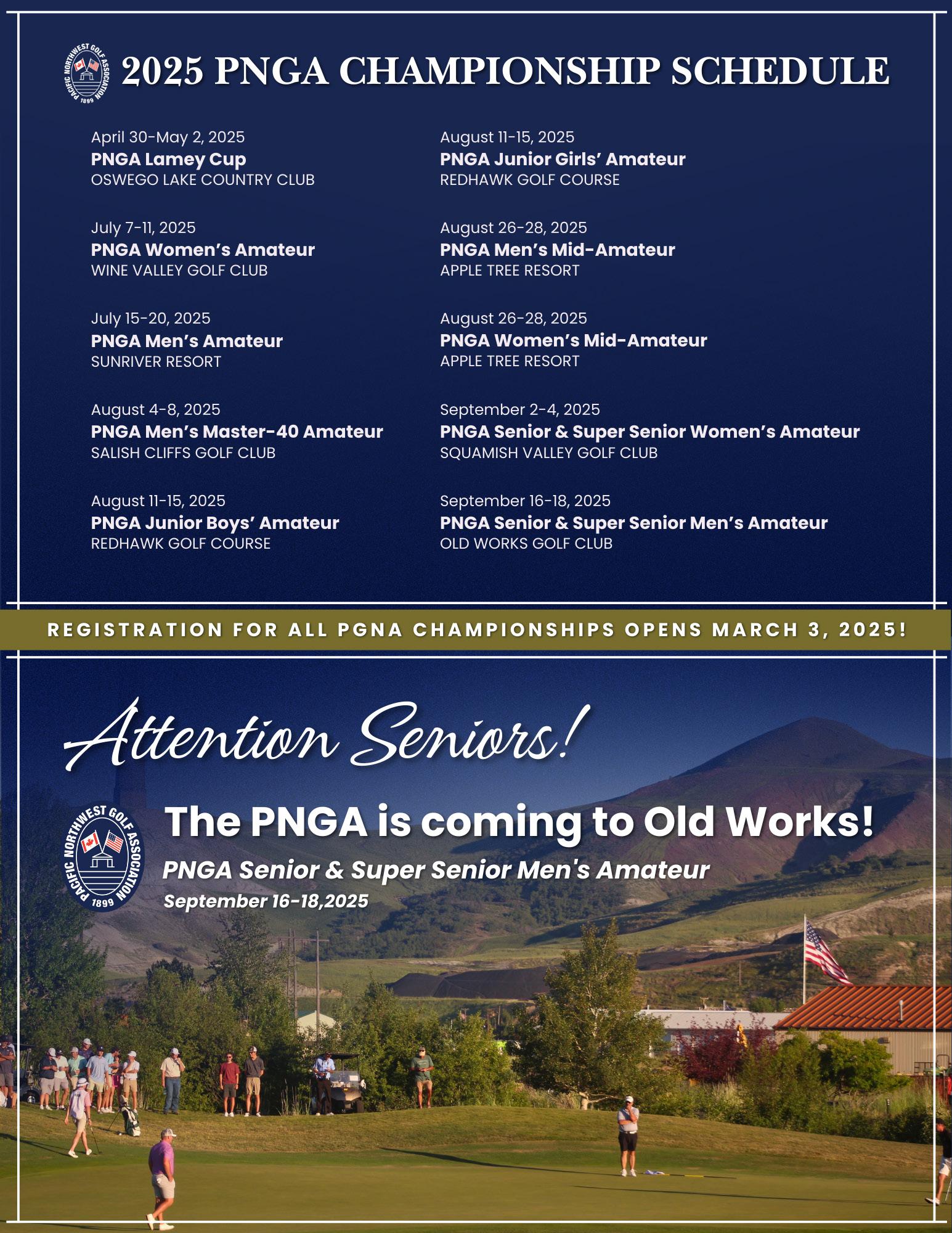
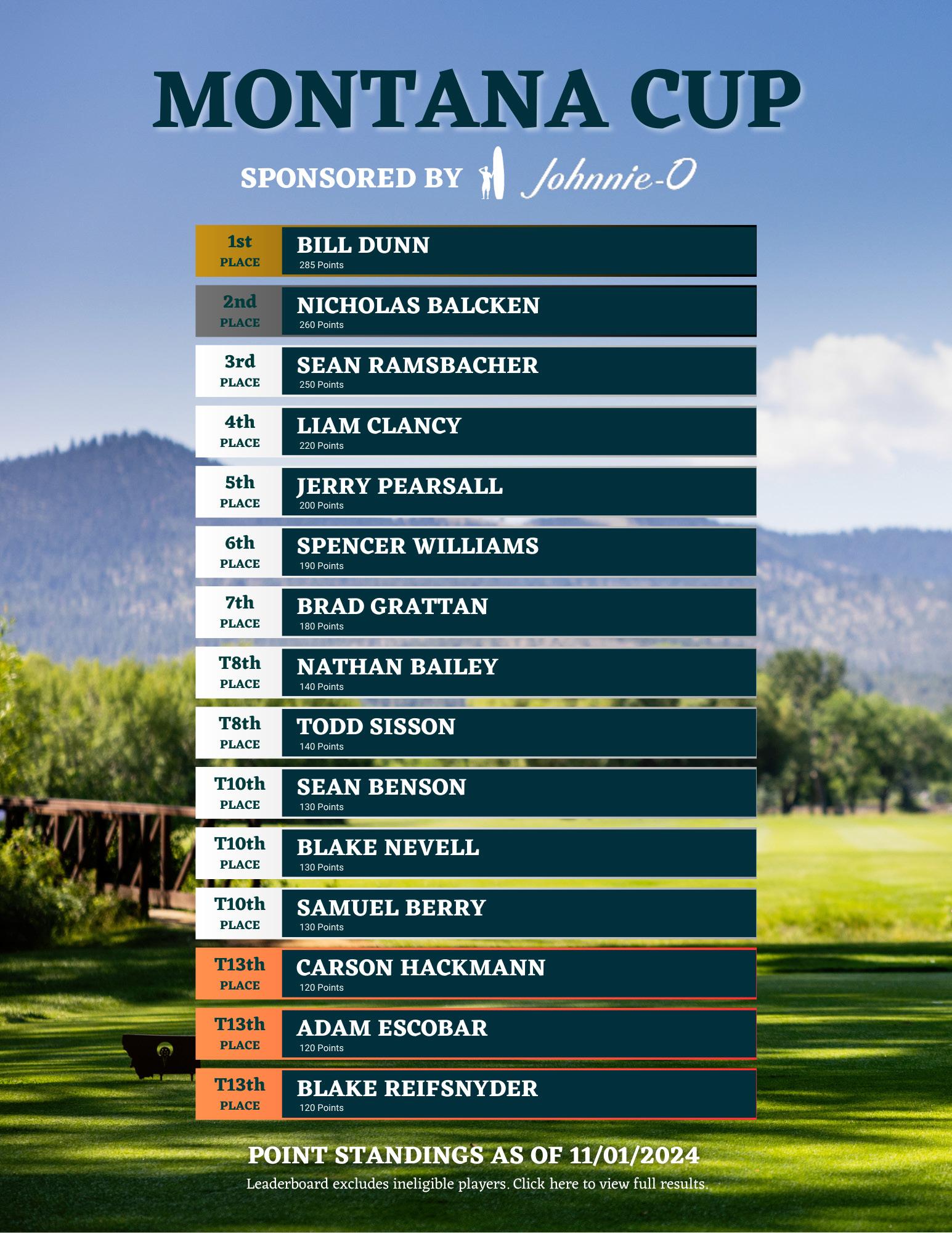
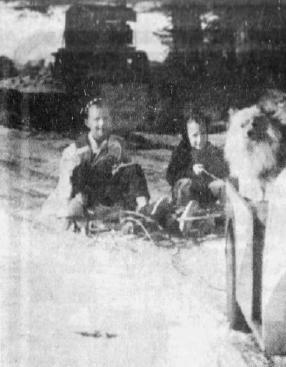
BY TY SPARING MSGA Communications Coordinator
One of my favorite moments every summer while working tournaments for the MSGA is during the Senior Tour or the Men’s State Senior Championship when the whole field is in their line of golf carts, and they begin motoring out to the course for the shotgun start. Zoom goes the horde of carts, off to claim their respective starting holes on their road to golfing glory.
(Well, everybody that is except for walking purists like Dave Streeter, Sue Court, Jim Spencer and Jay Anderson, among a few others)
While obviously not foundational to the original game, golf carts have nevertheless become ubiquitous in modern golfing culture. Just about everybody rides a cart, unless it’s a professional event. Some are personalized, some have GPS capabilities, and now there’s even those golf motorcycles roaming around. There are cart paths, cart garages, and golf cart charging stations. Some courses highly encourage carts as well for the sake of pace of play or unusually hilly terrain. If you didn’t know any better, you might think golf carts were integral to the game itself, not just an accessory.
At what point did it crossover?
As you can probably imagine the rise of golf carts didn’t happen overnight. First invented in 1932, the original carts were designed for people with disabilities and that’s how it stood for the next two decades. Then in the early 1950s a couple different versions of golf carts popped up – gasoline and electric – and they were marketed more to the gen-
eral public than they had been in the years previous.
But even in the 1950s golf carts were more of a luxury item and certainly weren’t as commonplace on the golf course as they’d eventually become. In our own neck of the woods, the MSGA banned them from state events in 1956, as the Independent Record’s headline read, “Solid Gold Cadillac Golf Carts to Be Barred in Montana.”
In some unique cases, motorized carts found use off the course as well, which would be another trend that would never go away. The Great Falls Leader reported in 1956 on a local security guard named Clayton Partch who used a golf cart to make his rounds. He said it made him “feel like one of the idle rich,” however, he still kept clubs in the cart because “a golf club comes in handy to bat a hoot owl or jackrabbit that tries to ride with.”
In 1950s Montana, golf carts weren’t just used by guys like Partch or the idly rich golf types though, as juvenile delinquents also seemed to have a lot of fun with them. An early example in 1958 saw a Billings Gazette headline read “Juveniles Desert Trikes for Golf Carts,” in which several youth caused $5,000 worth of damage to four carts and two greens at the Hilands Golf Club. One of the carts was even driven into a pond when the youngsters were done with it.
Vandalism was a popular theme for a while there, with many such cases popping up around the state. Bumper carts (or some version of that) was almost always involved, as was the case in 1963 at the Yellowstone Country Club who reported extensive damage after three carts were taken out for a “spirited game of whammo.” That same year another similar incident happened at Mead-
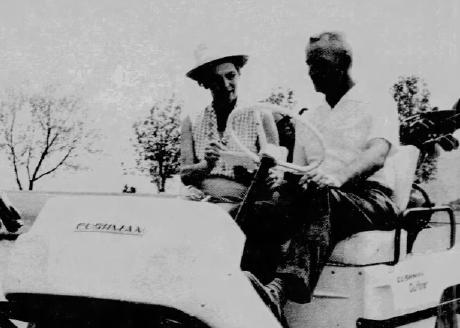
ow Lark Country Club in Great Falls after some ruffians had spent the previous night playing “chicken” and “collision.”
(*It wasn’t just juvenile delinquents that caused damage to golf carts however – even a dog took the blame at one point! In 1965 a golfer at the Kalispell Municipal Course left his golf cart unattended on the fourth hole, and his dog that was along for the ride “jumped into the empty cart, triggered the brake release and the cart trundled to the edge of the fairway and over the bank,” landing just a few feet short of the Stillwater River below.
Not to worry, the dog jumped out to safety before the cart went over the bank.)
And so it was into the mid-sixties, at least in Montana. Golf carts were still more or less associated with luxury and property damage,
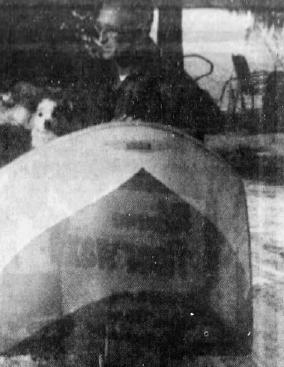
but somewhere in that decade things crossed over. We can point to a variety of broad consumer trends and innovations in technology that were happening nationally around this period, but two things in particular stand out.
One is that courses started catering to golf carts more as time moved on. Green Meadow Country Club for instance constructed an electricity furnished building for the sole purpose of housing gas and electric carts in the mid-1960s. Not only that, but more and more golf pros were becoming amateur mechanics in that they were responsible for maintaining the carts. All of this results in golf carts becoming more accessible to regular folks.
The other thing that stands out is the argument that a golf cart allows more people
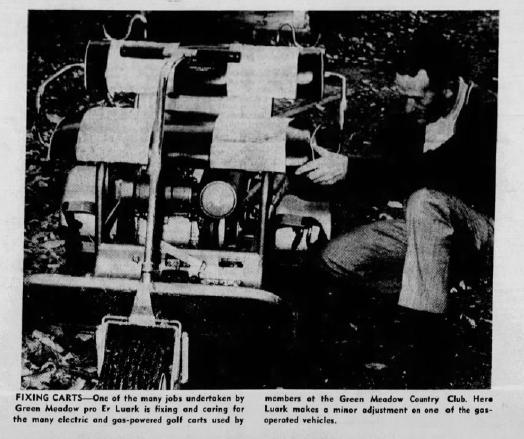
to play more golf. Maybe it’s to help deal with a lingering injury, maybe it’s the difference between playing three days in a row versus two days in a row. Or perhaps it allows a little extra time to add a few holes after the regulation 18 are done. In some cases, a golf cart is the difference between a person’s ability to play or not play at all.
There was some debate in the 1960s and there still is as to the merits of golf cart usage for those who don’t need it. The argument generally boils down to the question of: Is walking a fundamental part of the game, or is mode of transportation from shot to shot irrelevant?
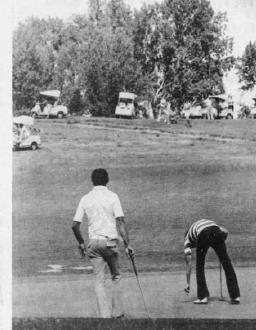
Tom Harmon, a nationally syndicated sports columnist who was popular in the 1960s had an interesting way of putting it when confronted with the question “I thought you played golf for the exercise?”
Harmon replied bluntly, “Let’s don’t misunderstand this situation. I play golf because I love the game, I like the companionship of the fellows and the gals I play with and the electric golf cart is a means of playing more. Also, after you have worked all day on your feet, you are ready to ride for nine or eighteen holes of relaxing golf.”
By 1968 you had headlines like the one
found in the Daily Inter Lake that claimed, “Cart Makes Caddy Obsolete in the 1960s.” This was just a little more than ten years after the MSGA had banned them from all state events. The golf cart had finally made it’s way into the mainstream and has only gained in popularity since then.
Even the trend of golf carts being used for other purposes continued to grow like with the story of a guy named Joe Siebenforcher up in Libby who used his golf cart to pull his grand kids around on a sled during the snowy winter months.
There was another funny case up in Kalispell of a guy wanting to use a golf cart for his driving test. When interviewed by the Daily Inter Lake, the Licensing Examiner chuckled, “The heck of it was he was within his legal right, no law on the Montana books prohibits running a golf cart on a public roadway if it has the proper safety devices and is licensed.”
Nowadays Montana State law has put more rules on the usage of golf carts on public streets and highways (see code 61-8391), but that has hardly put a dent in their popularity. The 1980s and 90s marked another transformative era as technology became

more reliable and customization became trendy. Roughly twenty years after the Green Meadow Country Club built their fancy electrified golf cart garage, by 1984 they were giving away brand new golf carts to anyone who shot a hole-in-one during their annual member-guest tournament.
The aesthetics of golf carts too became more personalized like in the case of Butte’s own Evel Knievel, who among his stable of golf carts had one designed like a Cadillac, and another one that he reinforced with steel because he supposedly hit the cart so much with his clubs.
Currently, in terms of money the global golf cart industry is valued at $2 billion annually, and it’s still growing. Along with optimistic financial projections, many believe that the future will include autonomous driving, smarter technologies, and increased connectivity. Who knows, maybe someday it’ll be like the Jetson’s and we’ll have flying golf carts.
That might sound silly, but have you ever seen Bubba Watson’s golf hovercraft? The glory days of golf carts might still be ahead of us.

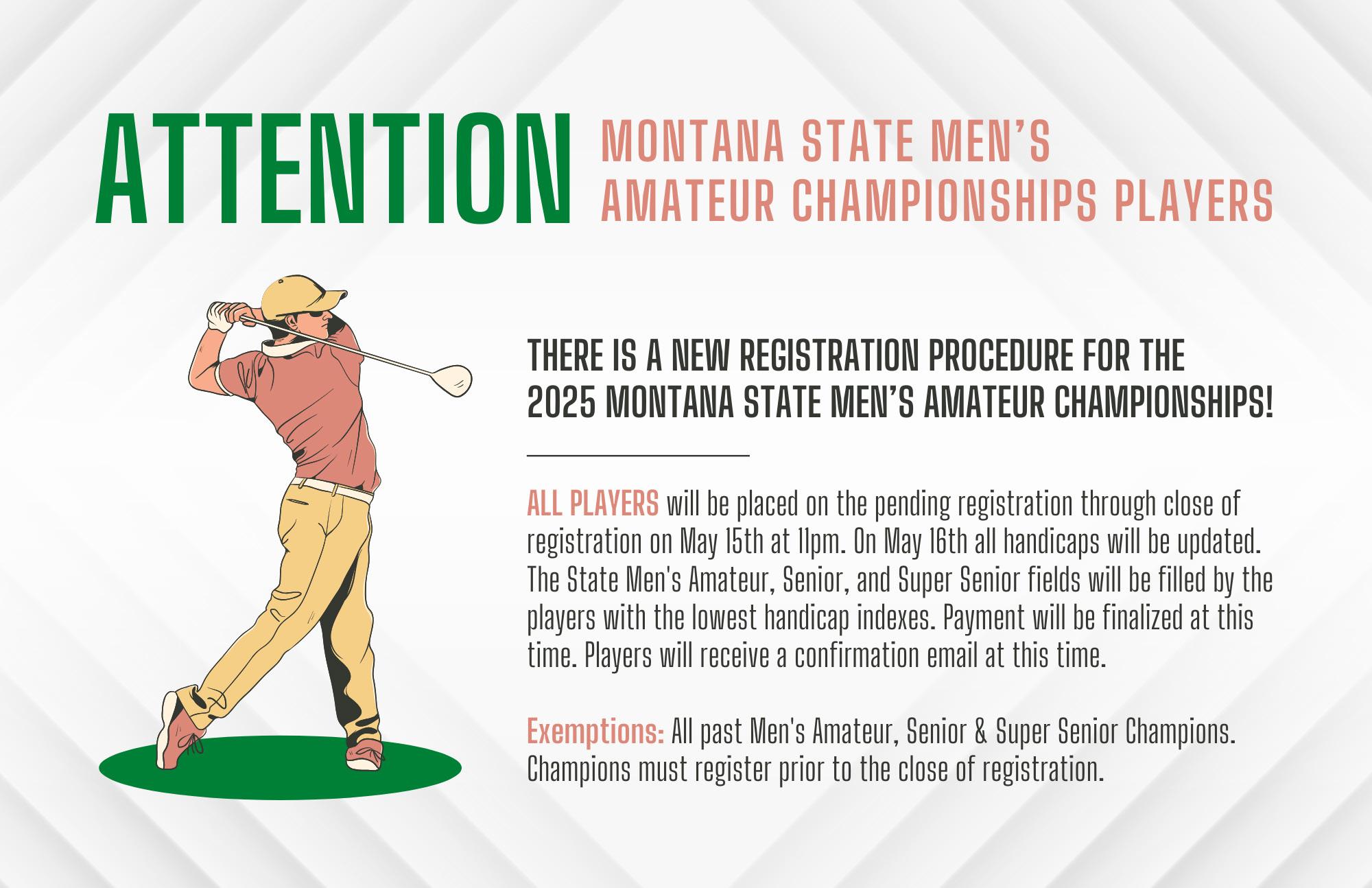


BY ROSS NIEWOLA AGRONOMIST, WEST REGION
It’s freeze-and-thaw season in many parts of the U.S. right now, and that is not something any superintendent is excited about. As we move closer to spring, the days get longer and frozen mornings can turn into relatively mild afternoons. This results in variable temperatures that affect soil stability, turf health and playing conditions.
When the top layer of the profile, including the turf canopy, thaws while the soil underneath remains frozen solid, the surface acts like a rug on a hardwood floor. Foot or vehicle traffic can easily cause the soft surface to slide, shift and ripple over the frozen subsoil. This physically disrupts the surface and may sever
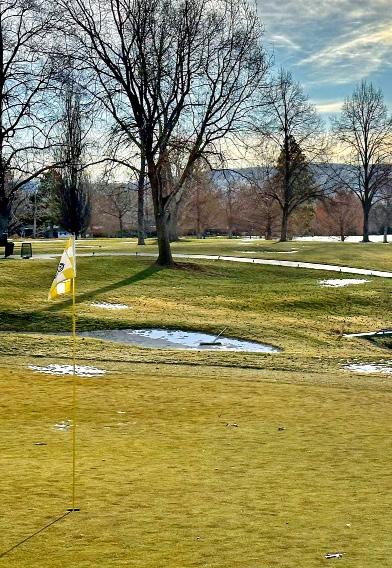
roots, which is a problem anywhere on the course but especially on the greens. There can be lasting battle scars from normal play during winter, but the injury sustained during an afternoon thaw cycle, and the time to heal after, can be significantly worse. It does not require abrupt changes in direction, an aggressive gait, or irresponsible behavior of any kind to cause serious accidental damage during these freezeand-thaw cycles.
The damage can visibly present itself in a number of ways. Depending on the severity, you may be aware immediately and can make surface repairs and monitor accordingly. Other times, the damage goes unseen and waits to

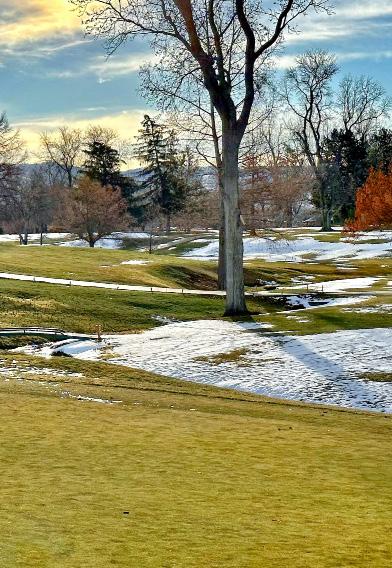
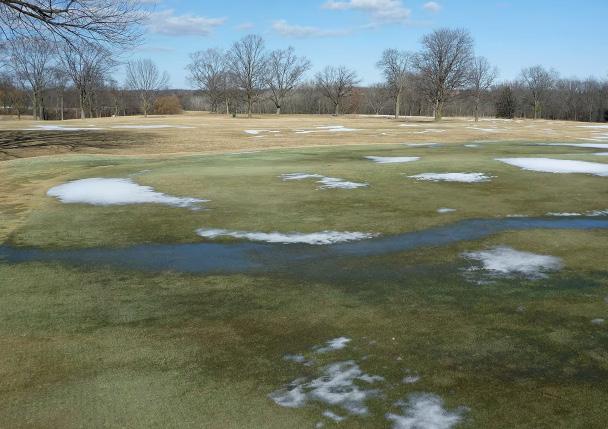
present a nasty surprise in spring. The cooler temperatures and decreased photosynthetic activity hide any flaws in the root system until turf resumes growth.
Pressure can be intense from golfers to open the course on uncharacteristically warm winter days. Everyone is eager to get back out there any chance they can get and courses are glad to have the extra revenue. But just a few

groups of golfers will take hundreds, if not thousands, of steps on and around the greens during a normal round of 18 holes, and any shifting or sliding of the soft surface may leave lasting irregularities or injured turf. Protecting your putting surfaces on these high-risk days is vital. After all, spring days, sunshine, full tee sheets and high expectations are right around the corner.
Click Here for more from the USGA Green Section Record ‒including the latest articles and videos on sustainable management practices that produce better playing conditions for better golf.



BY KIMBERLY MILLER USGA COMMUNICATIONS
LIBERTY CORNER, N.J. (February 26, 2025) – “The Prairie Raynor” by John Moran and Rand Jerris has been selected as the recipient of the USGA’s Herbert Warren Wind Award, recognizing the book as an outstanding work of golf literature. Through the authors’ storytelling, historic photos and original sketches, the book serves as the authoritative story on the course Seth Raynor built at Chicago Golf Club and his role in American golf course architecture.
“The Prairie Raynor” details Chicago Golf Club’s historic transformation – from its status as one of the USGA’s five founding clubs and host of eight national championships, its existential crisis in the wake of World War I, and its subsequent renaissance under Raynor’s masterful eye to its ultimate legacy as one of the nation’s most celebrated designs.
“This book reminds us of what it takes to stand the test of time,” said USGA CEO Mike Whan. “Chicago Golf Club is not just an iconic championship venue, but a beloved course that the greats in golf architecture and agronomy have given to America. The incredible care that John and Rand put forth in creating this book reminds us why the story is important, and why it’s deserving of recognition.”
The book details how the club’s founder, Charles Blair Macdonald, recommended that Chicago Golf Club hire Raynor to develop a new golf course after the original course had been eclipsed by more modern architectural principles and the longer, rubber-core ball. Primarily based
on the East Coast, Raynor had little familiarity with the scale and grandeur of the American prairie. Upon arriving in Wheaton, Ill., he spent two days in the club’s clock tower admiring the expanse to gather inspiration for what is now the 18-hole championship layout. One hundred years later, the clock tower continues to serve as a sentinel to the club and reflects a defining moment in Raynor’s design journey.
“This engaging book embodies precisely what the Herbert Warren Wind Award seeks to recognize – an original and exceptional contribution to our understanding of golf’s history,” said Hilary Cronheim, senior director, USGA Museums and World Golf Hall of Fame. “John and Rand have beautifully written not only a history of Chicago Golf Club but a detailed account of an architectural masterpiece and its subsequent stewardship. ‘The Prairie Raynor’ instantly deserves to occupy a prominent place on library shelves.”
As Chicago Golf Club’s historian, Moran sought out Jerris for the project to lend his extensive expertise in golf architecture and history, which greatly aided in understanding and communicating the influence that Raynor’s design still has today. “The Prairie Raynor” has also been recognized for its role in serving as an educational resource for golf course architects and agronomists.
Moran has been intertwined in the club’s history for nearly five decades, first as a caddie in 1977 before becoming a member in 1986.


Moran retired in 2021 from a career in both for-profit and non-profit management and currently serves on the board of Chicago Golf Club and works diligently to preserve the club’s rich legacy.
“Chicago Golf Club has been an important home for my family and me, and the opportunity to tell the story of its golf course with Rand Jerris has been a pleasure and a privilege,” said Moran. “My hope is that it helps our club, and other clubs like it, recognize and perpetuate the strong level of stewardship that has gone into the creation and decades of subsequent care that have made our golden-age course beautiful and still very relevant.”
A longtime student of golf-course architecture, Jerris is a noted sports historian and award-winning author who spent more than three decades with the USGA, including overseeing the USGA Golf Museum and Library and serving as a member of the organization’s executive leadership team. He currently consults for a number of prominent golf clubs and museums
through his firm, Purple Valley Strategies.
“John and I challenged each other to find innovative ways to describe a golf course,” said Jerris. “Seth Raynor’s creative genius and the club’s exemplary stewardship of his masterpiece provided ample inspiration to do so. It is our hope that the book will spark meaningful conversations among golfers, golf architects, golf course superintendents, green committee chairs and historians about the meaning, value and stewardship of great golf architecture.”
Moran and Jerris will be formally recognized at the USGA’s Annual Meeting on March 1 in Pinehurst, N.C., where they will be celebrated alongside other honorees, including Rod Lingle, this year’s USGA Green Section Award recipient, and David Jacobsen, the USGA’s Joe Dey Award recipient for outstanding volunteerism.
Published by Grant Books Ltd and laid out by noted book designers Alan and Andy Hughes, the book is available for purchase through GRANT BOOKS LTD’S WEBSITE and USGA PUBLICATIONS.
